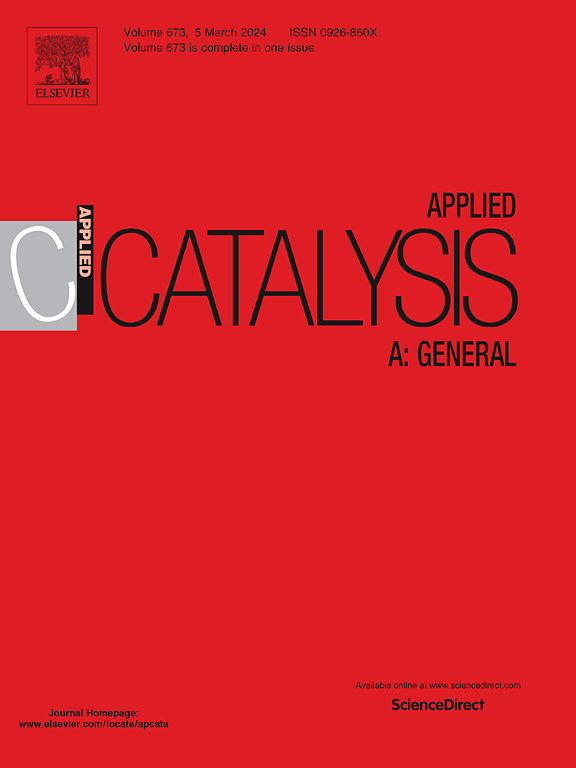Recent advances of CO2 electroreduction towards ethanol over Cu-based catalysts
IF 4.8
2区 化学
Q2 CHEMISTRY, PHYSICAL
引用次数: 0
Abstract
Electrochemical reduction of CO2 (ERCO2) represents a promising strategy for atmospheric CO2 mitigation by converting this greenhouse gas into value-added chemical feed stocks. Among various catalytic materials, copper-based electrocatalysts have emerged as frontier candidates due to their distinctive capability in promoting C-C coupling reactions, which selectively steer the reaction pathway toward multi-carbon products. Notably, these catalysts exhibit superior performance in producing industrially important C2 compounds such as ethylene and ethanol through precise modulation of reaction intermediates, thereby demonstrating significant potential for establishing a circular carbon economy. This paper provides a review of the reaction mechanism involved in the electrocatalytic reduction of CO2 to ethanol. It also discusses the research progress made in the development of Cu-based catalysts for this reaction, including Cu monomers, Cu-based bimetallic catalysts, CuO-based catalysts and non-metallic modified Cu-based catalysts. Additionally, the paper introduces various strategies that have been employed to enhance the selectivity of ethanol products, such as the confinement strategy、local environment modulation and electronic structure modulation. Finally, the paper discusses the challenges and future development directions of Cu-based catalysts in the electrocatalytic reduction of CO2 to ethanol.
cu基催化剂上CO2电还原乙醇的研究进展
电化学还原二氧化碳(ERCO2)是一种很有前途的战略,通过将这种温室气体转化为增值的化学原料,减少大气中的二氧化碳。在各种催化材料中,铜基电催化剂因其独特的促进C-C偶联反应的能力,选择性地引导反应途径向多碳产物方向发展而成为前沿候选材料。值得注意的是,这些催化剂在通过精确调节反应中间体生产工业上重要的C2化合物(如乙烯和乙醇)方面表现出优异的性能,从而显示出建立循环碳经济的巨大潜力。本文综述了电催化还原CO2制乙醇的反应机理。讨论了该反应的Cu基催化剂的研究进展,包括Cu单体催化剂、Cu基双金属催化剂、Cu基催化剂和非金属改性Cu基催化剂。此外,本文还介绍了用于提高乙醇产物选择性的各种策略,如限制策略、局部环境调制和电子结构调制。最后,讨论了铜基催化剂在电催化还原CO2制乙醇中面临的挑战和未来的发展方向。
本文章由计算机程序翻译,如有差异,请以英文原文为准。
求助全文
约1分钟内获得全文
求助全文
来源期刊

Applied Catalysis A: General
化学-环境科学
CiteScore
9.00
自引率
5.50%
发文量
415
审稿时长
24 days
期刊介绍:
Applied Catalysis A: General publishes original papers on all aspects of catalysis of basic and practical interest to chemical scientists in both industrial and academic fields, with an emphasis onnew understanding of catalysts and catalytic reactions, new catalytic materials, new techniques, and new processes, especially those that have potential practical implications.
Papers that report results of a thorough study or optimization of systems or processes that are well understood, widely studied, or minor variations of known ones are discouraged. Authors should include statements in a separate section "Justification for Publication" of how the manuscript fits the scope of the journal in the cover letter to the editors. Submissions without such justification will be rejected without review.
 求助内容:
求助内容: 应助结果提醒方式:
应助结果提醒方式:


